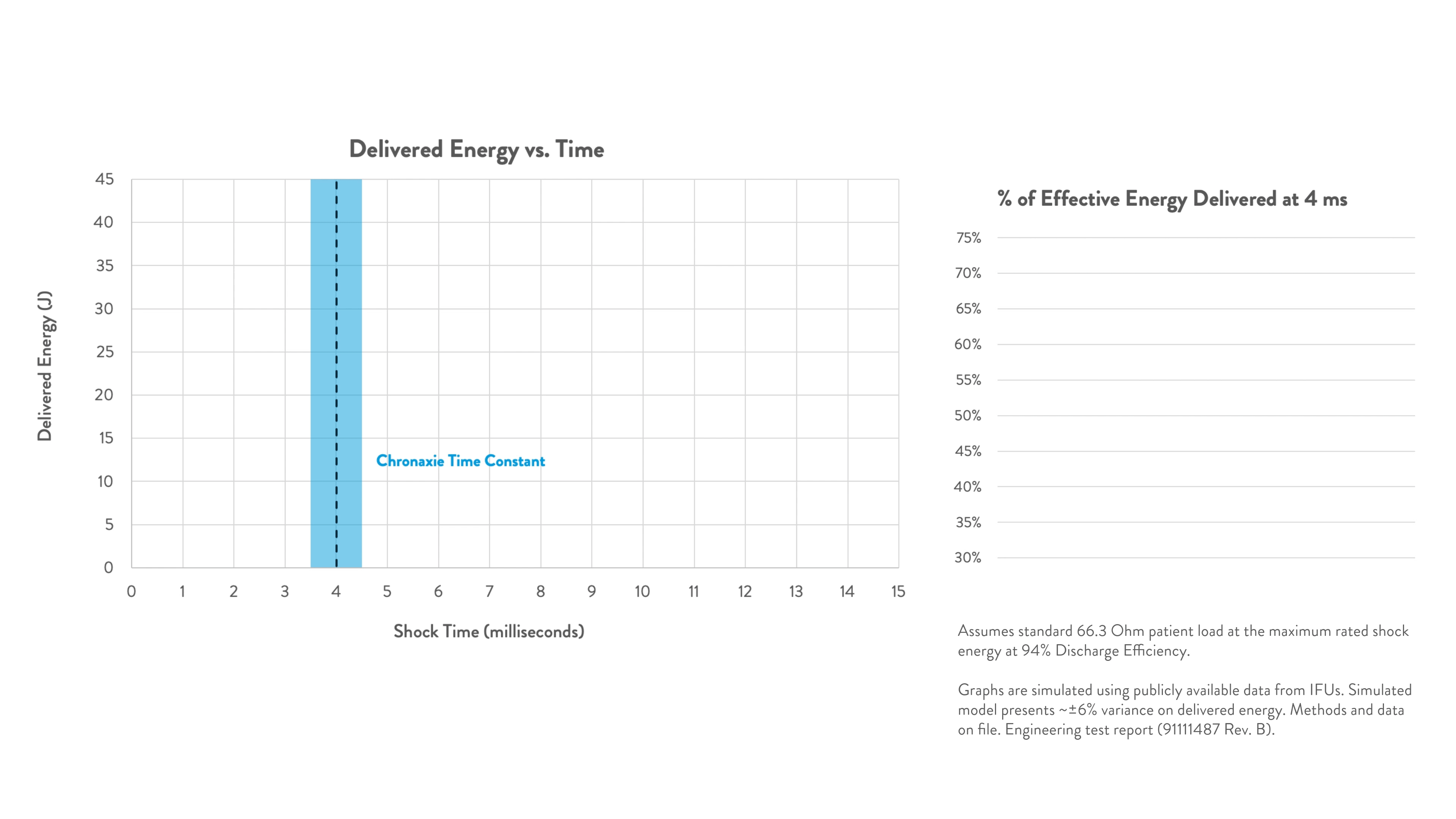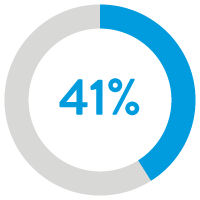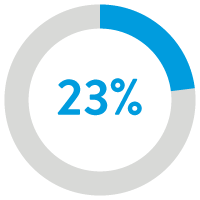Gallant™ & Entrant™ ICDs & CRT-Ds

MAT-2403640 v2.0 | Item approved for U.S. use only. ©2025 Abbott. All Rights Reserved.
Energy delivered within the chronaxie time window of 3.5 – 4.5 ms is the most effective for conversion.1
Any energy outside this response window is wasted and has potential to increase the risk of post-shock myocardial dysfunction.2

SyncAV™ CRT Technology provides the most QRS narrowing options at implant for patients. QRS narrowing after CRT implantation allows improved mortality. In patients with LBBB, QRS narrowing after CRT implant is associated with 2x lower mortality.4



41% reduction in heart
failure readmissions5

34% reduction in all-cause
hospitalization readmissions5

23% reduction ($1,135)
in 2-year cost5

lifetime savings per
CRT patient5
VF Therapy Assurance is the only technology to provide an additional safety net for difficult-to-detect ventricular arrhythmias. Without VF Therapy Assurance, ventricular tachyarrhythmias with low and varying signal amplitudes may not be successfully identified.6,7
of patients who received HV therapy due to VF Therapy Assurance's enhanced detection would have been otherwise untreated for potentially life-threatening arrhythmias.6



Abbott's ICD and CRT-D platforms are designed with patient outcomes in mind. Rob, a Navy veteran, experienced a cardiac arrest that required five shocks on the way to the hospital. With a Gallant™ ICD implant, Rob and his family now feel confident he's receiving the life-saving therapy he needs.
* MR Conditional with UltiPace™ Pacing Lead in the left bundle branch (LBB) area when used in the LV IS-1 port.
With Abbott-exclusive No Wait 1.5T and 3T MRI, ensure your patients can get the scans they need, when they need it.‡
Abbott's MRI-ready solutions ensure no loss of CRT therapy for your patients in full-body scans and allows for MRI Timeout programming.**

Brief Summary: Prior to using these devices, please review the Instructions for Use for a complete listing of indications, contraindications, warnings, precautions, potential adverse events and directions for use.
Intended Use: The Implantable Cardioverter Defibrillator (ICD) and Cardiac Resynchronization Therapy Defibrillator (CRT-D) devices are primarily intended for use with compatible leads detect and treat life threatening ventricular arrhythmias by providing ventricular antitachycardia pacing and ventricular cardioversion/defibrillation. In addition, these devices can detect and treat: chronic symptomatic bradyarrhythmia by providing sensing and pacing in the right ventricle; various atrioventricular conduction abnormalities by providing sensing and pacing in the right ventricle and/or right atrium. CRT-D devices sense cardiac activity and provide pacing to resynchronize the right and left ventricles.
The myMerlinPulse™ mobile application is intended for use by people who have an Abbott Medical implanted heart device and access to a mobile device. The app provides remote monitoring capability of the implanted heart device by transmitting information from the patient’s implanted heart device to the patient’s healthcare provider.
Indications: The ICD devices are indicated in patients who have already survived a cardiac arrest or are at a high risk of Sudden Cardiac Death (SCD) due to VT (ventricular tachycardia) or VF (ventricular fibrillation). Cardiac Resynchronization Therapy (CRT) devices are indicated for reduction of symptoms in patients who have congestive heart failure, a reduced left ventricular ejection fraction (LVEF) and a prolonged QRS duration. CRT-D devices are indicated in patients who meet the CRT indications and have already survived a cardiac arrest or are at a high risk of Sudden Cardiac Death (SCD) due to VT (ventricular tachycardia) or VF (ventricular fibrillation). The device is most commonly implanted within a device pocket in the pectoral region.
The myMerlinPulse™ mobile application is indicated for use by patients with supported Abbott Medical implanted heart devices.
Contraindications: Contraindications for use of the pulse generator system include ventricular tachyarrhythmias resulting from transient or correctable factors such as drug toxicity, electrolyte imbalance, or acute myocardial infarction.
The myMerlinPulse™ mobile application is contraindicated for use with any implanted medical device other than supported Abbott Medical implanted heart devices.
Adverse Events: Possible adverse events associated with the implantation of the pulse generator system include the following: Arrhythmia (for example, accelerated or induced), Bradycardia, Cardiac or venous perforation, Cardiac tamponade, Cardiogenic shock, Death, Discomfort, Embolism, Endocarditis, Erosion, Exacerbation of heart failure, Excessive fibrotic tissue growth, Extracardiac stimulation (phrenic nerve, diaphragm, pectoral muscle), Extrusion, Fluid accumulation within the device pocket, Formation of hematomas, cysts, or seromas, Heart block, Hemorrhage, Hemothorax, Hypersensitivity, including local tissue reaction or allergic reaction, Infection, Keloid formation, Myocardial damage, Nerve damage, Occlusion/Thrombus, Pericardial effusion, Pericarditis, Pneumothorax, Pulmonary edema, Syncope, Thrombosis, Valve damage. Complications reported with direct subclavian venipuncture include pneumothorax, hemothorax, laceration of the subclavian artery, arteriovenous fistula, neural damage, thoracic duct injury, cannulation of other vessels, massive hemorrhage and rarely, death. Among the psychological effects of device implantation are imagined pulsing, depression, dependency, fear of premature battery depletion, device malfunction, inappropriate pulsing, shocking while conscious, or losing pulse capability. Possible adverse device effects include complications due to the following: Abnormal battery depletion, Conductor fracture, Device-programmer communication failure, Elevated or rise in defibrillation/cardioversion threshold, Inability to defibrillate or pace, Inability to interrogate or program due to programmer or device malfunction, Incomplete lead connection with pulse generator, Inhibited therapy including defibrillation and pacing, Inappropriate therapy (for example, shocks and antitachycardia pacing [ATP] where applicable, pacing), Interruption of function due to electrical or magnetic interference, Intolerance to high rate pacing (for example dyspnea or discomfort), Lead abrasion, Lead fracture, Lead insulation damage, Lead migration or lead dislodgement, Loss of device functionality due to component failure, Pulse generator migration, Rise in DFT threshold, Rise in pacing threshold and exit block, Shunting of energy from defibrillation paddles, System failure due to ionizing radiation. Additionally, potential adverse events associated with the implantation of a coronary venous lead system include the following: Allergic reaction to contrast media, Breakage or failure of implant instruments, Prolonged exposure to fluoroscopic radiation, Renal failure from contrast media used to visualize coronary veins.
No potential adverse events have been identified with use of the myMerlinPulse™ mobile application.
† Competition defined as LV Only and BiV Simultaneous pacing modes. Modes 1 and IV of the referenced JAHA data. Numbers were rounded up for graphic representation.
‡ No minimum length of time requirement between implant and MRI scan. Stability of pacing capture thresholds is required prior to MRI scan
* MR conditional with our UltiPace™ Pacing Lead in the left bundle branch area (LBBA) using LV IS-1 port with Gallant™ and Entrant™ CRT-D models. For additional information about specific MR Conditional ICDs, leads, including scan parameters, warnings, precautions, adverse conditions to MRI scanning, and potential adverse events, please refer to Abbott MRI-Ready Systems Manual at manuals.eifu.abbott.
** No Loss of CRT therapy only applicable for model numbers CDHFA500Q, CDHFA500T, CDHFA500D, CDHFA500B.
MAT-2111546 v7.0
Stay Connected